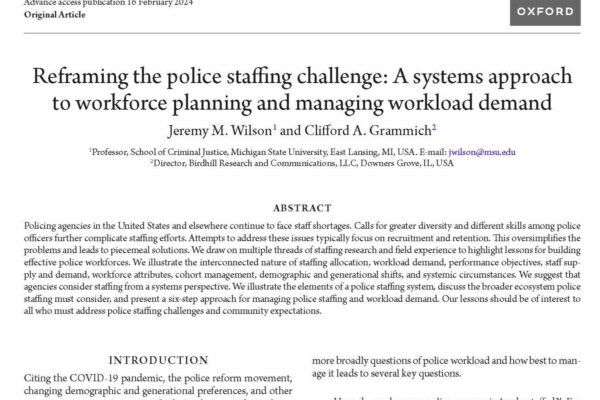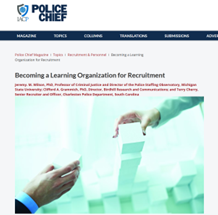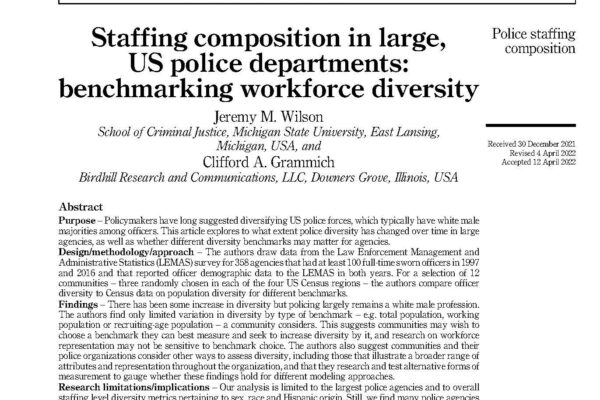The Police Staffing Crisis: Evidence-based Approaches for Building, Balancing, and Optimizing Effective Workforces. Policing: A Journal of Policy and Practice, Vol. 18, 2024.
The purpose of this special issue, The Police Staffing Crisis: Evidence-Based Approaches for Building, Balancing and Optimizing Effective Workforces, is to help unpack the dynamic staffing challenge, examine many of its component parts, and offer lessons to advance the science and practice of police workforce planning. It features work by global, thought-leading researchers and practitioners, many of whom collaborate on research and outreach as part of the Michigan State University Police Staffing Observatory (https://cj.msu. edu/research-excellence/pso/pso-home.html). While each of the 15…






